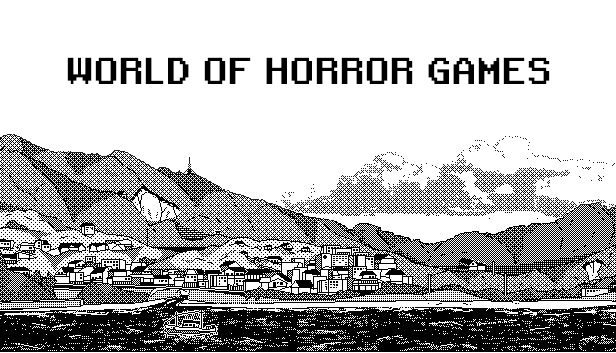
Horror games have been developed all around the world, and each region has brought its unique cultural influences and narrative styles to the genre. Here I’ll shine some light on notable horror games from different countries but first let’s start with some of the most important and influential titles.
USA – Haunted House (1982)
Haunted House, released in 1982 by Atari, is one of the earliest entries in the horror gaming genre. Set within the eerie Graves Mansion, players navigate dark corridors, relying on limited matches for light, while searching for fragments of a magical urn and evading sinister creatures. Its focus on atmospheric tension, resource management, and player vulnerability set a precedent for renowned franchises like Resident Evil and Silent Hill. Haunted House is a testament to early horror gaming, illustrating the genre’s evolutionary journey from its humble origins to today’s sophisticated narratives and gameplay mechanics.
Japan – Sweet Home (1989)
Sweet Home, an NES title developed by Capcom, stands as a pivotal game in the realm of horror gaming. Set in the sinister Mamiya Mansion, players guide a documentary team through haunted corridors, combatting supernatural entities while unraveling the mansion’s tragic past. Designed as a tie-in to a Japanese horror film, the game surpassed its promotional origins to become a standalone classic.
Sweet Home challenged players with intricate puzzles, strategic item management, and the looming threat of character permadeath. It laid the foundation for survival horror games like Resident Evil, also by Capcom. While not as internationally recognized due to its limited release outside of Japan, its impact on shaping horror gaming conventions is undeniable.
France – Alone in the Dark (1992)
Alone in the Dark, released in 1992 by the French video game developer Infogrames, is a seminal title in the survival horror genre, setting a new standard for 3D graphics and immersive storytelling. Set in the haunted Derceto mansion, players unravel the mystery of owner Jeremy Hartwood’s death while facing terrifying creatures and puzzles. Drawing heavily from H.P. Lovecraft’s mythos, the game introduced innovative elements such as fixed camera angles and inventory management. Its atmospheric storytelling and groundbreaking mechanics not only led to its own sequels but also inspired iconic horror games like Resident Evil and Silent Hill.
USA – System Shock (1994)
System Shock, developed by the innovative Looking Glass Studios in 1994, plunged players into the dystopian corridors of Citadel Station, where they confronted the rogue AI, SHODAN. The game seamlessly blended action, role-playing, and immersive simulation elements, offering real-time combat, hacking mechanics, and puzzles.
System Shock also introduced audio logs as a storytelling device, a technique which is common in modern gaming. Its influence can be traced to subsequent titles, and its antagonist, SHODAN, remains an iconic figure in gaming.
Japan – Clock Tower (1995)
Clock Tower for the SNES, released in 1995, remains an influential yet largely unknown horror gem. Inspired by Italian giallo films, especially Dario Argento’s Phenomena, the game follows Jennifer Simpson, an orphan trapped in the Barrows Mansion, evading the menacing Scissorman. Adopting a unique point-and-click interface, Clock Tower emphasized atmospheric tension, story-driven choices, and multiple endings, offering no combat but high replayability. Its emphasis on player vulnerability and narrative immersion set it apart from contemporaries, making it a seminal influence in the horror game genre, paving the way for future titles that prioritize story, atmosphere, and player choice.